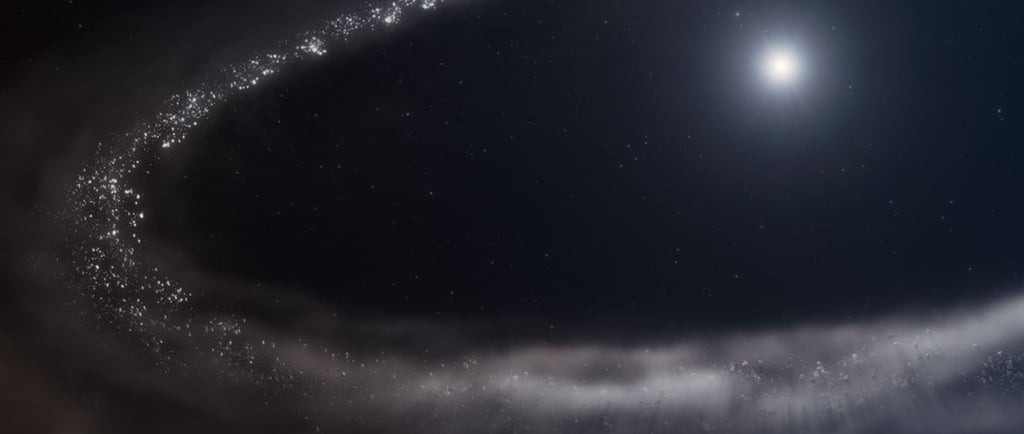Frozen Water in A Young Star System


Introduction to the Discovery
Astrophysics continually unveils the mysteries of the universe, and one of its recent revelations involves the presence of crystalline water ice in a dusty debris disk orbiting a sun-like star located 155 light years away. This significant finding has been made possible through the advanced capabilities of NASA’s James Webb Space Telescope, which has been pivotal in analyzing the spectral data from this distant system.
The Role of NASA's Space Telescopes
The journey to identifying frozen water in this celestial body began with NASA's retired Spitzer Space Telescope. Although no longer operational, Spitzer provided crucial hints indicating the possibility of frozen water in the system. This pioneering telescope utilized infrared technology to observe the debris disk, which consists of particulate material and gas surrounding the star. The residual data from Spitzer laid the groundwork for further exploration by the advanced Webb telescope.
Insights from the James Webb Space Telescope
With its superior capabilities, the James Webb Space Telescope has enabled astronomers to analyze the spectral signatures of material within the debris disk in greater detail than ever before. The observations reveal not only signs of crystalline water ice but also crucial information about the chemical composition of the disk. These findings suggest that the presence of water ice could play an integral role in the solar system's formation and evolution, ultimately impacting planetary development in the vicinity of the star.
This discovery has sparked tremendous interest in the scientific community, as the presence of crystalline water ice is a fundamental condition for considering the potential for life beyond Earth. With 155 light years separating us from this system, the implications of such findings could be incredibly profound, offering a glimpse into other worlds that may harbor life-sustaining properties.
By leveraging remarkable technology and sustained research efforts, NASA continues to push the boundaries of our understanding of the universe. The insights obtained from the debris disk not only add a new chapter to our cosmic narrative but also highlight the significant role of icy bodies in the grand tapestry that defines our galaxy.
